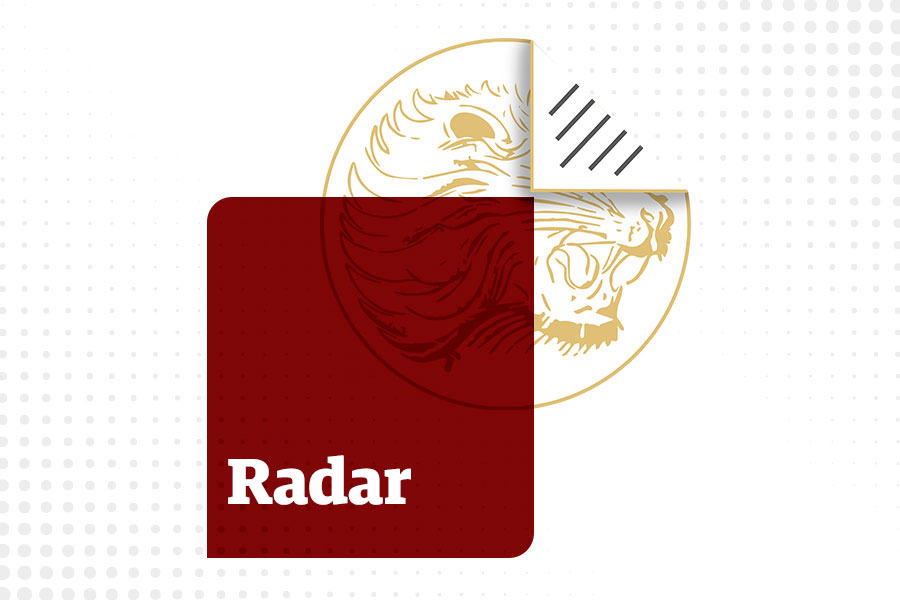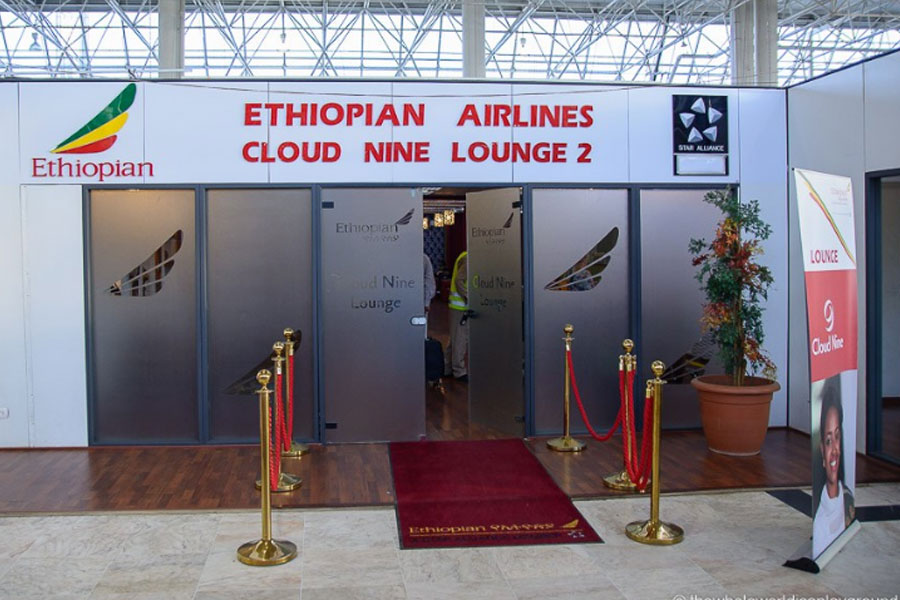
Agenda | Nov 28,2020
An evolving joint venture between Etihad Airways and Ethiopian Airlines is shaping up to be a force in Africa–Middle East aviation, with the potential to unlock over 400 million dollars in annual revenue for the Abu Dhabi-based carrier.
Launched earlier this year, the partnership has already laid the groundwork for deeper integration across passenger and cargo operations, with senior executives projecting rapid revenue scaling and strategic synergies.
“Combining the strengths of both carriers and their partners will unlock massive potential,” Jurriaan Stelder, Etihad’s senior vice president for Network & Alliances, said in an exclusive interview with Fortune.
He disclosed that Plans are underway to consolidate the two carriers' freight divisions. Central to this ambition is Etihad’s relationship with SF Airlines, China’s largest cargo operator, which could channel goods from Asia and the Gulf into Africa through Addis Abeba.
Currently operating daily flights between Abu Dhabi and Addis Abeba, the alliance is targeting growth to multiple daily frequencies and larger aircraft. Revenues are projected to quickly surpass 100 million dollars, accelerating toward the fourfold mark as the joint venture expands its route network and geographic coverage.
“If we expand geographies, it can grow really fast to 200 million, 300 million, and 400 million,” Stelder said, stating the efficiency of a model designed to minimise costs while opening new markets.
Stelder likened the venture to transatlantic joint business models seen in North America and Europe, banking on its ability to deliver cost efficiency, expanded market access, and competitive pricing.
“This is not a partnership between two airlines," said an Ethiopian executive. "It’s a partnership between two futures.”
The alliance is expected to position Etihad to deepen its presence in Africa, while Ethiopian Airlines gains a firmer foothold in Asia and India, regions Etihad dominates. While initial focus rests on passenger alignment, through integrated schedules, codeshares, and loyalty programs, cargo is emerging as the strategic frontier.
“Cargo is the next frontier,” said Stelder, citing Ethiopia’s need for high-capacity and cost-efficient logistics.
However, both sides are moving forward with plans to integrate their cargo networks, especially as Etihad’s relationship with SF Airlines is expected to accelerate shipments from Dubai, China, and other key markets into Africa via Addis Abeba.
“We’re taking the first steps there," Stelder said. "It’s not defined yet, but there are lots of opportunities between the UAE and Ethiopia, or Asia and Africa at large.”
The plan is not only to move perishables and pharmaceuticals more efficiently, but also e-commerce cargo, which could help support Africa’s growing trade needs. With Ethiopian Airlines covering 40 countries and 60 cities as Africa’s biggest carrier, and Addis Abeba becoming an essential hub for Etihad’s network into India, China, Japan, and Vietnam, the combination promises to increase capacity and boost connectivity across the corridor. Etihad’s contribution is believed to be its higher-end service standards and global market reach, which could enhance the passenger experience.
Stelder made a point of capitalising on Etihad’s international reputation for service, its multinational cabin crew representing more than 100 nationalities, and the Airline’s ongoing investments in upgraded aircraft and cabins. He said the partnership is about both sides learning from one another.
“Ethiopian knows Africa better than anyone," he told Fortune. "We’re keen to learn from them how to serve African customers and embrace the continent’s diversity. We hope they’ll learn from us, too.”
What makes the tie-up stand out is its status as the first deep joint venture between airlines from the Middle East and Africa. Only a year since its launch, executives on both sides say the relationship is solid and built to last, benefiting both airlines, their customers, and the economies they serve.
Chargé d’Affaires of the United Arab Emirates (UAE), Hamad Al Badawi, described the route as a milestone in relations between the UAE and Ethiopia, pointing to “mutual respect, collaboration, and a shared aspiration for progress.” He believes that the daily flight boosts economic ties and supports trade and investment between the two regional centres, positioning the airline partnership as a catalyst for even deeper engagement between the countries.
According to Antonoaldo Neves, Group CEO of Etihad Aviation Group, the joint venture began with a visit to Ethiopian’s headquarters a year ago, during which he was impressed by the Airline’s tight operational controls. The deal went from concept to launch in six months, a process that usually takes up to three years, and includes joint training programs to upgrade staff skills and operational standards.
“Few countries operate across four continents like Ethiopian does,” Neves said.
The daily service now offers connections for business, leisure, and diplomatic travellers.
According to Mesfin Tassew, Ethiopian Airlines Group CEO, the focus is on improving the passenger experience and expanding the network.
“This partnership delivers greater value than either of us could achieve alone,” he said.
Mesfin cited synchronised flight schedules, integrated loyalty programs, and Addis Abeba’s key role as Africa’s diplomatic hub. He also noted Abu Dhabi’s status as a business centre, predicting more tourism and trade between the markets.
Both airlines are coming off strong years in 2024. Etihad, based in Abu Dhabi, reported revenue of 6.9 billion dollars for the year ending December 2024, with profit after tax of 476 million dollars. The carrier saw passenger numbers rise by 32pc to 18.5 million, and cargo revenue jumped by 24pc to 1.1 billion dollars, helped by an 87pc load factor and a growing fleet.
Ethiopian Airlines, which closes its fiscal year in July, posted total revenue of 7.6 billion dollars, up by eight percent from the previous year. The Airline carried 19.1 million passengers and 785,000tns of cargo across 135 destinations, adding six new routes and 13 additional planes to its network. Ethiopian forecasts revenue of eight billion dollars by June 2025, an increase of more than 14pc from the last year. Mesfin disclosed that the long-term goal is to reach 25 billion dollars by 2035, with 209 international and 31 domestic destinations, a fleet of 271 aircraft, and 67.2 million passengers annually. Plans include replacing older jets, training 300 new pilots each year, and moving to a new airport by 2029.
Aviation analyst Yonatan Menkir Kassa called the joint venture a case of “strategic complementarity.” According to him, Ethiopian offers wide reach and reliability in Africa, while Etihad adds premium infrastructure and market strength in Asia and the Middle East, forming a corridor linking Addis Abeba and Abu Dhabi to world markets. The venture already merges schedules, fares, and cargo operations, making it easier for travellers to connect, check bags through, and earn frequent-flyer miles.
Yonatan believes the partnership’s impact on cargo is especially meaningful, with Ethiopian Cargo & Logistics Services and Etihad Cargo working together to build a high-capacity bridge for perishables, crucial for Africa’s trade. He cautioned, however, that blending Ethiopia’s state-owned airline model with Etihad’s profit-driven approach requires careful management. Running two major hubs means avoiding duplicate routes, and keeping IT systems, loyalty programs, and cybersecurity investments up to date.
"Geopolitical risks in the Middle East and Horn of Africa are also a concern, although the current political relationship between Ethiopia and the UAE provides stability," he said.
Yonnatan sees the real transformation is in market access. Ethiopian can now expand into Asia and Australia, while Etihad gains direct access to Africa’s aviation market, which the International Air Transport Association (IATA) expects to double in size over the next two decades. Yonatan described the partnership as a kind of aviation diplomacy, helping to drive economic integration across continents.
PUBLISHED ON
Oct 12,2025 [ VOL
26 , NO
1328]

Agenda | Nov 28,2020

Fortune News | Sep 14,2019

Radar | Dec 19,2021

Radar | Oct 26,2019

Radar | Nov 04,2023

Radar | Dec 04,2021

Fortune News | Apr 26,2019

View From Arada | Mar 27,2021

Commentaries | Jun 08,2024

Radar | Apr 19,2025

Dec 22 , 2024 . By TIZITA SHEWAFERAW
Charged with transforming colossal state-owned enterprises into modern and competitiv...

Aug 18 , 2024 . By AKSAH ITALO
Although predictable Yonas Zerihun's job in the ride-hailing service is not immune to...

Jul 28 , 2024 . By TIZITA SHEWAFERAW
Unhabitual, perhaps too many, Samuel Gebreyohannes, 38, used to occasionally enjoy a couple of beers at breakfast. However, he recently swit...

Jul 13 , 2024 . By AKSAH ITALO
Investors who rely on tractors, trucks, and field vehicles for commuting, transporting commodities, and f...

Nov 1 , 2025
The National Bank of Ethiopia (NBE) issued a statement two weeks ago that appeared to...

Oct 25 , 2025
The regulatory machinery is on overdrive. In only two years, no fewer than 35 new pro...

Oct 18 , 2025
The political establishment, notably the ruling party and its top brass, has become p...

Oct 11 , 2025
Ladislas Farago, a roving Associated Press (AP) correspondent, arrived in Ethiopia in...